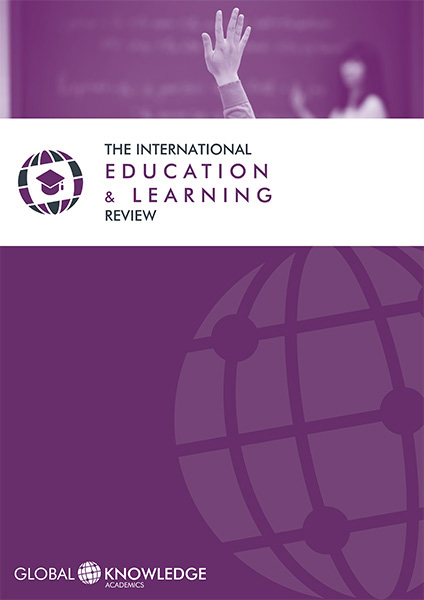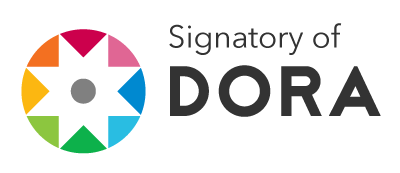Implementing Text-to-Speech Technology as a Means of Enhancing L2 Reading Fluency
DOI:
https://doi.org/10.37467/gka-edurev.v1.2401Palabras clave:
Oral reading fluency, Text to speech technology, Autonomy, PronunciationResumen
This article reports on the results of a participatory action research project carried out with a group of ten elementary level students from extension courses in a private university in Bogotá, Colombia (Universidad Minuto de Dios, main branch). The main objective of this study was to determine the effect of text-to-speech (TTS) technology usage on reading fluency in speakers of English as a foreign language. The results show that learners develop oral reading fluency in areas such as linking sounds, pronouncing accurately, and reading timing. Furthermore, learners raised their awareness of the benefits of using Information and Communication Technologies (ICTs) in the process of learning a foreign language, as well as the importance of being autonomous learners. Pedagogical implications and prospects for future research are included.
Descargas
Estadísticas globales ℹ️
|
526
Visualizaciones
|
1578
Descargas
|
|
2104
Total
|
|
Citas
Brown, D. (2001). Teaching by Principles: An Interactive Approach to Language Pedagogy. White Plains, NY: Pearson Education.
Benson, P. (2003). Learner autonomy in the classroom. In Nunan, D. (Ed.) Practical English Language Teaching. New York: McGraw Hill.
Crace, A, et al. (2011). New Total English Pre – Intermediate. Harlow, UK: Pearson Education.
Chapelle, C., & Jamieson, J. (2008). Tips for teaching with CALL: Practical approaches to computer-assisted language learning. White Plains, NY: Pearson Education.
daCruz Payne, C. (2005). Shared Reading for Today’s Classroom. New York: Scholastic.
DeKeyser, R. M. (2001). Automaticity and automatization. In P. Robinson (Ed.), Cognition and second language instruction (pp. 125–151). Cambridge: Cambridge University Press.
Fountas, I.C., & Pinnell, G.S. (2011). Fountas and Pinnell benchmark assessment systems 1 and 2 (2nd ed.). Portsmouth, NH: Heinemann.
Huang, Y., & Liao, L. (2015). A study of Text – To – Speech (TTS) in children’s English learning (pp. 14-30). Central Taiwan University of Science and Technology No.666, Buzih Road, Beitun District, Taichung City 40601, Taiwan (R.O.C.)
Krashen, S. D. (2004, April). The power of reading: Insights from the research (2nd ed.). Portsmouth, NH: Heinemann.
Longman Photo Dictionary ESOL Skills for Life Entry 1. (2010). London, UK: Pearson Education.
Mills, S. C. (2006). Using the Internet for Active Teaching and Learning New Jersey: Pearson Education, Inc. Moon, D. Web-Based Text-to-Speech Technologies in Foreign Language Learning: Opportunities and Challenges in Computer Applications for Database, Education, and Ubiquitous Computing, Springer, Vol. 352, 2012, pp. 120-125, DOI: 10.1007/978-3-642-35603-2_19
Nes-Ferarra, S. L. (2005). Reading, fluency and self-efficacy: A case study. International Journal of Disability, Development and Education, 52(3), p. 215.
Peñaflorida, A.H. (2002). “Non-traditional forms of assessment and response to student writing: A step toward learner autonomy”, in J.C. Richards and W.A. Renandya (eds.), Methodology in Language Teaching: An Anthology of Current Practice. Cambridge: Cambridge University Press, 344-53.
P. Sharma, & B. Barrett. (2007). Review of blended learning: using technology in and beyond the language classroom. Oxford: Macmillan Publishers Limited
Rasinski, T. V., & Samuels, S. J. (2011). In S. J. Samuels & A. E. Farstrup (Eds.). What research has to say about reading instruction (pp. 94 –114). Newark, DE: IRA.
Richards, J. & Lockhart, C. (1994). Reflective Teaching in Second Language Classrooms. Cambridge: Cambridge University Press.
Scharle Agota & Schabo, A. (2000). Learner Autonomy. Cambridge: Cambridge University Press.
Schmenk, B. (2005). Globalizing Learner Autonomy. TESOL Quarterly. 39(1), 107-118.
Segalowitz, N. (2003). Automaticity and second language learning. In C. Doughty & M. Long (Eds.), The handbook of second language acquisition (pp. 382–408). Oxford, UK: Blackwell.
Segalowitz, N. S., & Segalowitz, S. J. (1993). Skilled performance, practice, and the differentiation of speed-up from automatization effects: Evidence from second language word recognition. Applied Psycholinguistics, 14, 369–385.
Swain, M. (1995). Three functions of output in second language learning. In G. Cook, & B. Seidlhofer (Eds.), Principle and practice in applied linguistics: Studies in honour of H. G. Widdowson (pp. 125-144). Oxford: Oxford University Press
Wright, W. (2010). Foundations for Teaching English Language Learners. Philadelphia, USA: Caslon Publishing.
Descargas
Publicado
Cómo citar
Número
Sección
Licencia
Los autores/as que publiquen en esta revista aceptan las siguientes condiciones:
- Los autores/as conservan los derechos de autor.
- Los autores/as ceden a la revista el derecho de la primera publicación. La revista también posee los derechos de edición.
- Todos los contenidos publicados se regulan mediante una Licencia Atribución/Reconocimiento-SinDerivados 4.0 Internacional. Acceda a la versión informativa y texto legal de la licencia. En virtud de ello, se permite a terceros utilizar lo publicado siempre que mencionen la autoría del trabajo y a la primera publicación en esta revista. Si transforma el material, no podrá distribuir el trabajo modificado.
- Los autores/as pueden realizar otros acuerdos contractuales independientes y adicionales para la distribución no exclusiva de la versión del artículo publicado en esta revista (p. ej., incluirlo en un repositorio institucional o publicarlo en un libro) siempre que indiquen claramente que el trabajo se publicó por primera vez en esta revista.
- Se permite y recomienda a los autores/as a publicar su trabajo en Internet (por ejemplo en páginas institucionales o personales), una vez publicado en la revista y citando a la misma ya que puede conducir a intercambios productivos y a una mayor y más rápida difusión del trabajo publicado (vea The Effect of Open Access).













